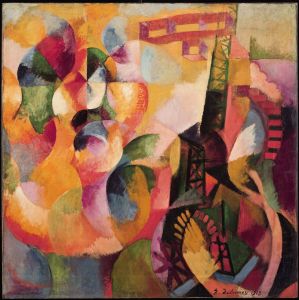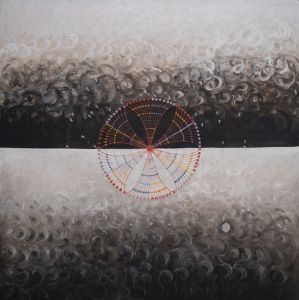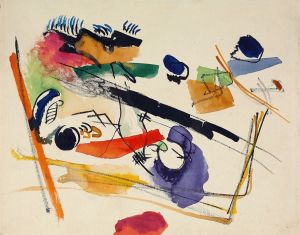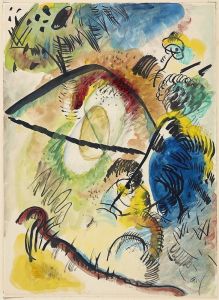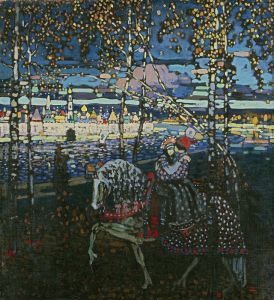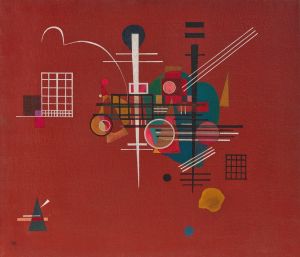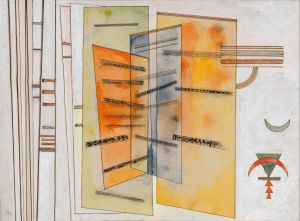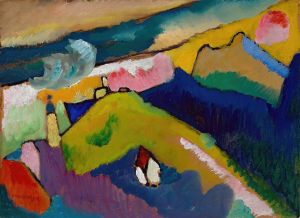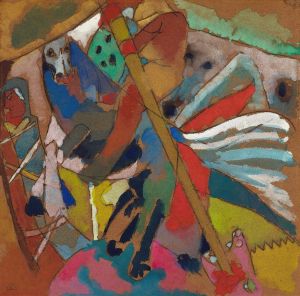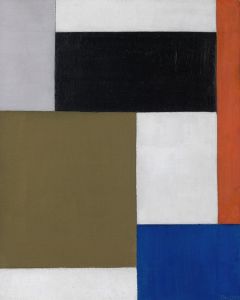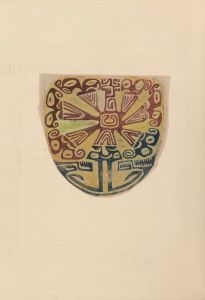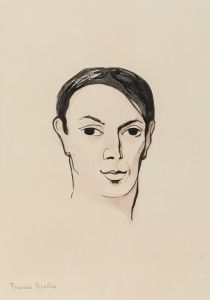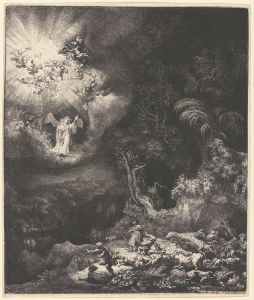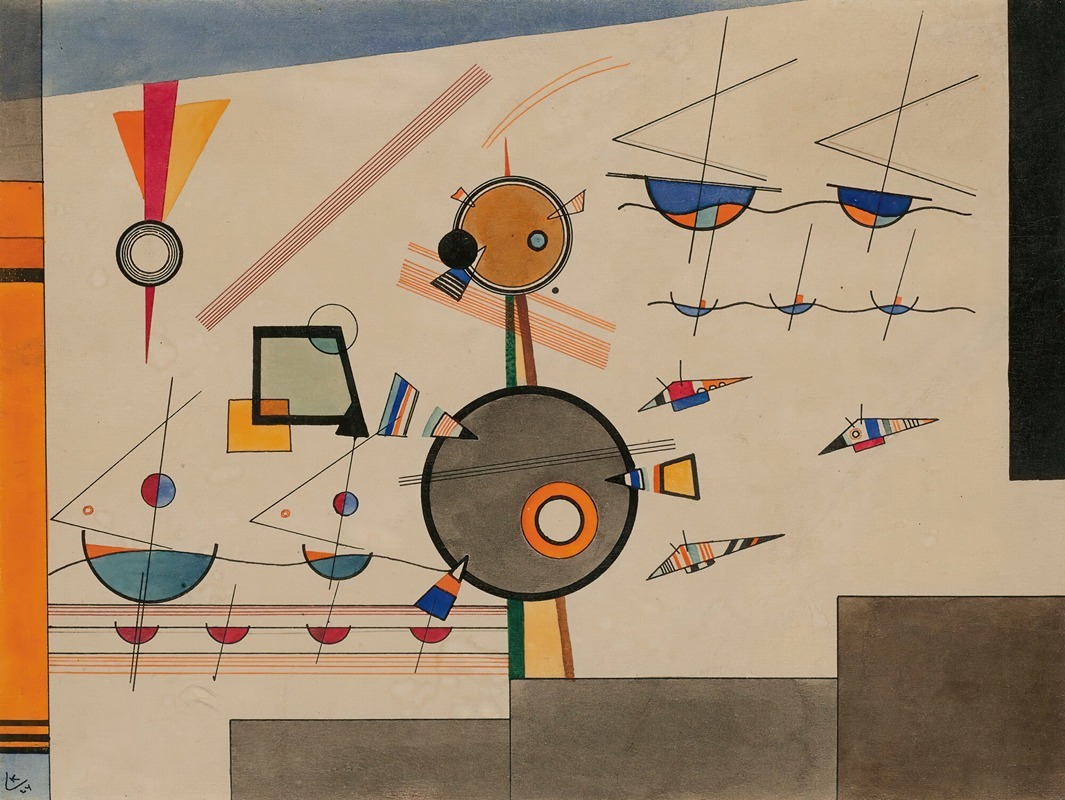
Schweben
A hand-painted replica of Wassily Kandinsky’s masterpiece Schweben, meticulously crafted by professional artists to capture the true essence of the original. Each piece is created with museum-quality canvas and rare mineral pigments, carefully painted by experienced artists with delicate brushstrokes and rich, layered colors to perfectly recreate the texture of the original artwork. Unlike machine-printed reproductions, this hand-painted version brings the painting to life, infused with the artist’s emotions and skill in every stroke. Whether for personal collection or home decoration, it instantly elevates the artistic atmosphere of any space.
"Schweben" (Floating) is a painting by the Russian-born artist Wassily Kandinsky, created in 1926. Kandinsky is widely regarded as one of the pioneers of abstract art, and his works are known for their vibrant use of color and innovative compositions. "Schweben" exemplifies his mature style, characterized by geometric shapes, dynamic forms, and a complex interplay of colors.
Kandinsky was deeply influenced by his synesthetic experiences, where he could perceive colors as sounds and vice versa. This unique perception played a significant role in his artistic process, allowing him to create compositions that evoke a sense of rhythm and harmony. "Schweben" reflects this synesthetic approach, with its carefully balanced elements that seem to float and interact on the canvas.
The painting is composed of various geometric shapes, including circles, triangles, and lines, arranged in a seemingly weightless manner. The use of bold, contrasting colors adds to the sense of movement and energy within the composition. Kandinsky's choice of colors and shapes was not arbitrary; he believed that each color and form had its own inherent meaning and emotional impact. For example, he associated blue with spirituality and calmness, while yellow represented warmth and dynamism.
"Schweben" was created during Kandinsky's time at the Bauhaus, a progressive art school in Germany where he taught from 1922 to 1933. The Bauhaus was known for its emphasis on the integration of art, craft, and technology, and Kandinsky's work during this period reflects these principles. His paintings from this era often incorporate elements of Constructivism and Suprematism, movements that focused on abstract, geometric forms and the use of modern materials.
Kandinsky's tenure at the Bauhaus was a period of significant artistic development. He collaborated with other influential artists and designers, such as Paul Klee and László Moholy-Nagy, and his work was influenced by the school's interdisciplinary approach. "Schweben" is a testament to Kandinsky's ability to synthesize these diverse influences into a cohesive and innovative artistic vision.
The painting is part of the collection at the Solomon R. Guggenheim Museum in New York City, which houses an extensive collection of Kandinsky's works. The museum's founder, Solomon R. Guggenheim, was an avid collector of Kandinsky's art and played a crucial role in bringing his work to the attention of the American public. Today, "Schweben" is celebrated as a prime example of Kandinsky's contribution to abstract art and his enduring influence on modern art.
In summary, "Schweben" by Wassily Kandinsky is a significant work that showcases the artist's mature abstract style, characterized by geometric shapes, vibrant colors, and a sense of floating movement. Created during his time at the Bauhaus, the painting reflects the innovative and interdisciplinary spirit of the school. It remains an important piece in the history of abstract art and continues to be admired for its dynamic composition and emotional resonance.





